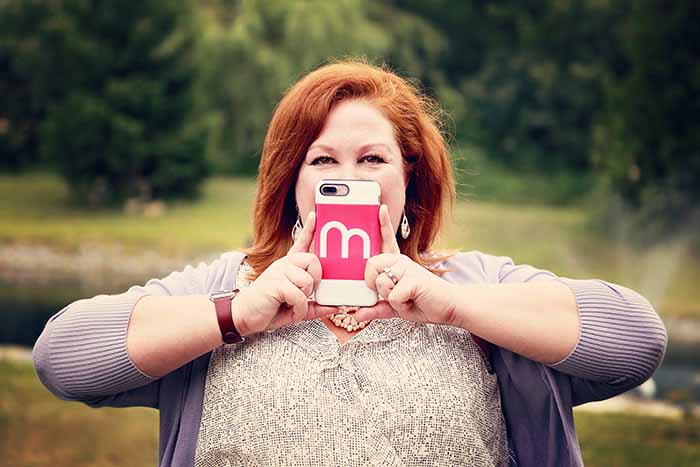What's a C Section?
When you're pregnant, you've got a lot on your mind. And that usually includes how to give birth to your baby. If your search history includes what's a c section I've got you covered, Mama!
Although I'm a nurse myself, when I found out that I was gonna need a c section I was really scared. Even though I technically knew what the procedure itself looked like, I still wasn't sure what to expect and to be honest, I wasn't very well prepared. That's why I made my free online prep class for you:
Make sure you sign up for the class and let me help you pack your hospital bag with the things you'll really need, make a birth plan so you feel involved in your baby's birth and plan your postpartum for an easier recovery!
What is a C-section?
You may hear people call it a C-section, a cesarean section or a cesarean delivery. Sometimes nurses just call it a section. No matter what people name it, a C-section is when a baby is born by surgery through incisions made in your lower belly and uterus.
What happens in the hospital before my C-section?
If you're having a planned C-section or if it's not an emergency, a few things will happen before you get into the operating room.
Before your cesarean
- You'll be informed about the procedure and then sign a consent form
- The anesthesiologist will talk to you about anesthesia. The most common is a spinal block that numbs you from your chest down to your toes
- You'll be given an IV in your hand or arm to deliver fluids and medicine
- You may be asked to drink a little bit of medicine to cut down on your stomach acids
Once you've reached the operating room, things typically unfold pretty quickly. They may or may not go in the following order:
What happens right before the cesarean starts
- You'll be given a spinal or general anesthesia
- You'll be positioned on the bed with the help of the nurses
- Heart and blood pressure monitors will be placed
- Your pubic hair may or may not be clipped
- A catheter will be placed into your urethra to catch your urine
- An oxygen mask may be placed over your mouth and nose
- Your tummy will be cleaned with antiseptic wash
- A sterile drape will be placed around the surgical site and your legs and chest
- A sterile curtain is put up between your head and your lower body
Before the doctor cuts your skin, they'll test to make sure you're perfectly numb. Once they've tested, everyone in the room will pause to say your name and the procedure they're performing on you. Once that's all done (and it all happens within a few minutes!) the surgery will begin.
What happens during a C-section?
Now that you're fully numb or asleep, the doctor can use a scalpel to make an incision through your skin and the wall of your tummy. They may decide to make the cut up and down your lower belly or along your bikini line, from side-to-side. Generally that's the more common incision because it's less obvious and heals better.
Next, the doctor will cut into the wall of the uterus. This will generally be about three to four inches in length and it may also be vertical or horizontal.
Once that incision is made the baby can be born. Your doctor may need to manipulate the baby to have them fit through those incisions and you may feel lots of tugging or pressure, but no pain.
When the baby comes out, the umbilical cord is cut, the placenta is removed and the incisions are all closed up with stitches and staples.
During a planned C-section the baby is typically born in about 10-15 minutes but if it's an emergency they can deliver the baby much quicker although the procedure is exactly the same.
How long does a C-section surgery take?
Typically the entire surgery takes about 45 minutes. While the doctor is closing up your incisions they'll also be inspecting visible organs and making sure none of your blood vessels are bleeding.
What happens after a c-section
After your C-section is completed, the nurse or doctor will stitch or staple everything up and place a dressing over the incision on your skin. When you see that bandage, remember that you've also got stitches on many other layers inside your body, too. If your doctor used staples to close your skin, they'll decide when they should come out. Usually you'd go to your family doctor's office to have them removed within 10 days.
You'll be wheeled back to your room in your bed and you'll start to recover while you care for your newborn.
Once the anesthesia wears off you'll start to feel pain from all of those incisions. In the first few days you may need to take pain relievers to manage getting up and moving around. You may experience painful gas because of the surgery, so moving around will help to relieve it.
How long does a C-section recovery take?
If you ask your doctor, they'll say a full recovery can take between four to six weeks. Technically that may be true for your incisions, but many people find it takes longer. It's important to avoid lifting anything heavier than the baby, exercise and minimize using the stairs.
You'll need help with your recovery and caring for the baby. Ask friends and family for help or consider hiring a postpartum doula.
Recovering from a cesarean is no joke and you really need to plan for lots of help and support.
What else do I need to know about C-section surgery and recovery?
If you're having a planned cesarean, there are many ways that you can prepare to make the experience feel very positive. You'll remember details of your birth for years to come, so planning can help make happier memories.
If your C-section is planned, make sure you create a birth plan so you're aware of your options. I know it's hard because a C-section is a unique way to have a baby, so I created a birth options cheat sheet for you.
Need help with your C-section birth plan?
Grab my free guide to cesarean birth options so you can create a birth plan that will make you feel prepared and informed!
FREE C SECTION BIRTH PLAN >>
What to read next: Cesarean Section Facts
Post Gallery
Hey there, I’m Joanne.
I’ve spent about 20 years serving women as a nurse, doula and Lamaze educator. I have 4 kids and I know firsthand how lonely and isolating motherhood can be, so I created MamaSoup. I'm mostly known for my love of red wine, spontaneously singing and my confidence in being my true self on social media. When I’m not busy building women up, you can catch me taking Instagram stories of my bulldog Ruby, watching The Handmaid’s Tale, playing MUber (Mom Uber) to my kids or vacationing in my favourite town: Cabo San Lucas, Mexico.
I love serving the world by providing a space for moms to connect and support each other. In my opinion, moms are the backbone of communities because they are (literally) raising the future!
As the founder and CEO of MamaSoup, I’ve been featured on CHEX TV Morning Show, KawarthaNOW, Economic Development- The City of Kawartha Lakes and MyKawartha.
Still with me? Join me over at MamaSoup to keep the conversation going!
Read More









